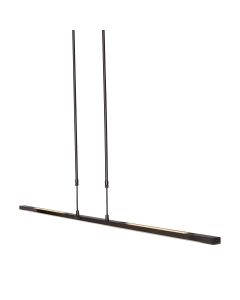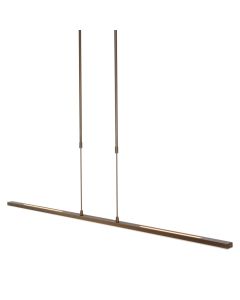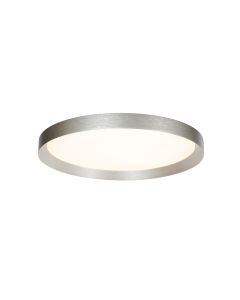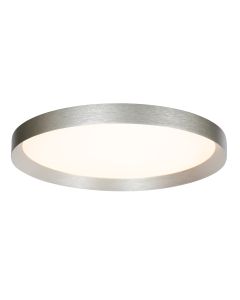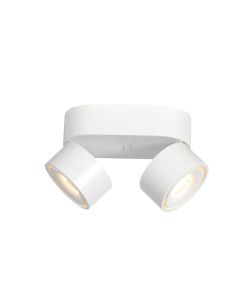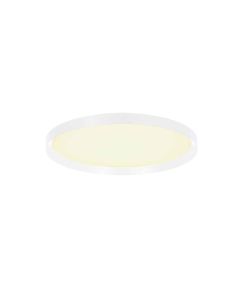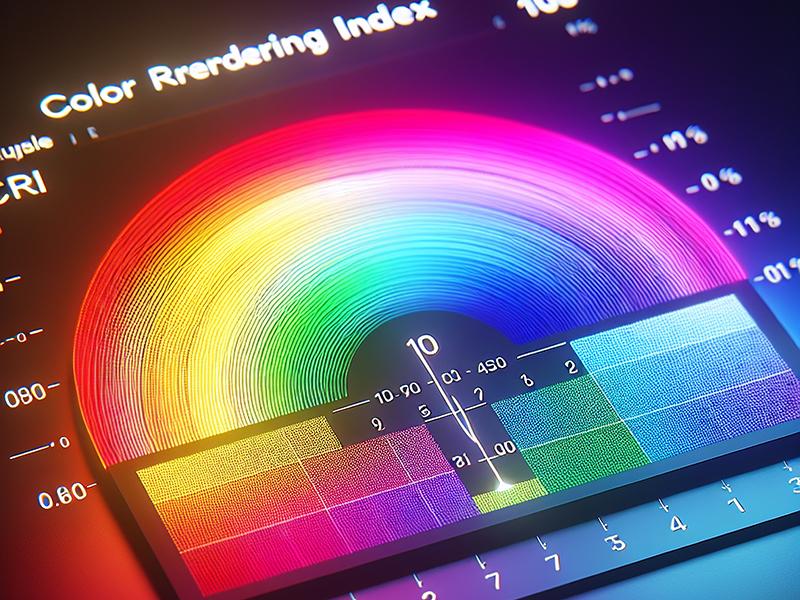
Direct and Indirect Light
Lighting plays a crucial role in how a space is perceived. It determines not only the functionality of a room but also its atmosphere and aesthetics. A well-thought-out lighting plan combines direct and indirect light to create both functional and ambient lighting.
- Direct light shines directly on a surface and is ideal for tasks such as cooking, reading, or working.
- Indirect light reflects off the ceiling or walls, diffusing a soft glow that makes the space feel larger and creates a warm ambiance.
In this blog, we explain the differences between these two types of light, how to combine them effectively, and which Steinhauer lamps – such as the Zelena 1482ZW, Flady, Fez, Bikkel 7586ZW, and Ringlede 2695GO – can help you achieve optimal lighting.
What Is Direct Light?
Direct light is light that travels straight from the source to a surface without being reflected. It is necessary for activities that require good illumination, such as cooking, eating, or working.
Characteristics of Direct Light:
✔ Focused illumination – Targeted on a table, worktop, or specific object.
✔ Strong contrasts – Creates clear shadows and adds depth.
✔ Bright and functional – Essential for daily activities.
Examples of Direct Light:
The Zelena 1482ZW as direct lighting – This pendant lamp provides not only indirect light but also direct downward lighting, making it perfect for a kitchen island or dining table, ensuring practical brightness.
The Fez spotlight – A directional spotlight that provides pure direct lighting. Ideal for highlighting a painting, desk, or reading corner.
The Bikkel 7586ZW and Ringlede 2695GO pendants – These lamps provide only direct light. The Bikkel is perfect for a dining table, while the Ringlede delivers a powerful downward light beam, ideal for illuminating a workspace or highlighting a specific object.
What Is Indirect Light?
Indirect light does not shine directly on an object but is reflected off walls or ceilings, creating a softer and more evenly distributed light.
Characteristics of Indirect Light:
✔ Soft and even lighting – Avoids harsh shadows and spreads light evenly.
✔ Expands the space – A room feels larger when light reflects off walls and ceilings.
✔ Creates a warm and cozy atmosphere – Ideal for living rooms and bedrooms.
Examples of Indirect Light:
The Zelena 1482ZW as indirect lighting – In addition to its direct light, this lamp projects light upwards, reflecting off the ceiling and gently illuminating the entire room.
The Flady ceiling lamp – This model combines direct and indirect light. The subtle upward lighting reflects off the ceiling, creating a more open and inviting ambiance.
Wall lamps and indirect lighting fixtures – Lamps such as LED strips or wall-mounted fixtures create a soft, indirect glow, perfect for hallways and relaxation areas.
How to Combine Direct and Indirect Light?
A well-balanced lighting plan integrates both direct and indirect light for the best effect.
According to Different Rooms:
Kitchen and dining area – Install a lamp like the Zelena 1482ZW above the kitchen island or dining table. The downward light ensures precise illumination for meals, while the upward light creates a cozy ambiance.
Living room – A ceiling light like Flady provides direct light downward and soft indirect light upward. Add reading lamps or spotlights for targeted lighting in specific areas.
Bedroom – Use indirect lighting with LED strips or wall lamps for a relaxing ambiance. Combine them with bedside lamps that provide direct light for reading.
Office and workspace – Direct light is essential here. A Fez spotlight provides focused illumination for the desk, while a ceiling lamp with indirect light reduces eye strain.
Why Indirect Light Is Essential
In addition to its decorative appeal, indirect lighting offers practical benefits:
✅ Enhances the sense of space – Indirect lighting makes a room feel more open and spacious.
✅ Reduces glare – Soft lighting prevents harsh brightness and discomfort.
✅ Balances with direct lighting – Creates a more harmonious and comfortable environment.
Tip: To maximize the effect of indirect lighting, use light-colored walls and ceilings to better reflect the light.
Which Lighting Is Right for Your Space?
Need Functional and Focused Direct Light?
✔ Fez spotlight – Adjustable and powerful for precise illumination.
✔ Bikkel 7586ZW and Ringlede 2695GO pendants – Directed exclusively downward, perfect for a dining table or work surface.
Looking for a Combination of Direct and Indirect Light?
✔ Zelena 1482ZW – Direct light for a worktop, combined with upward indirect lighting.
✔ Flady ceiling lamp – Offers both downward illumination and a soft glow toward the ceiling for added ambiance.
Want to Create a Spacious and Cozy Atmosphere?
✔ Ceiling lamps with indirect light, such as Flady, reflect light upward, making a room feel larger.
✔ Wall-mounted fixtures and LED strip lighting for a soft, relaxing effect.
Conclusion: Achieving the Perfect Balance Between Direct and Indirect Light
A well-designed lighting plan integrates both direct and indirect light to create a space that is functional yet inviting.
Direct light, such as from the Fez spotlight, Bikkel, and Ringlede, is ideal for work areas and dining spaces.
Indirect light, as seen in Zelena and Flady, enhances the sense of space and adds warmth.
A combination of both, like the Zelena 1482ZW, provides the ultimate lighting solution.
Looking for the perfect lighting balance? Explore the Steinhauer collection and find the ideal lighting solution for your home!

